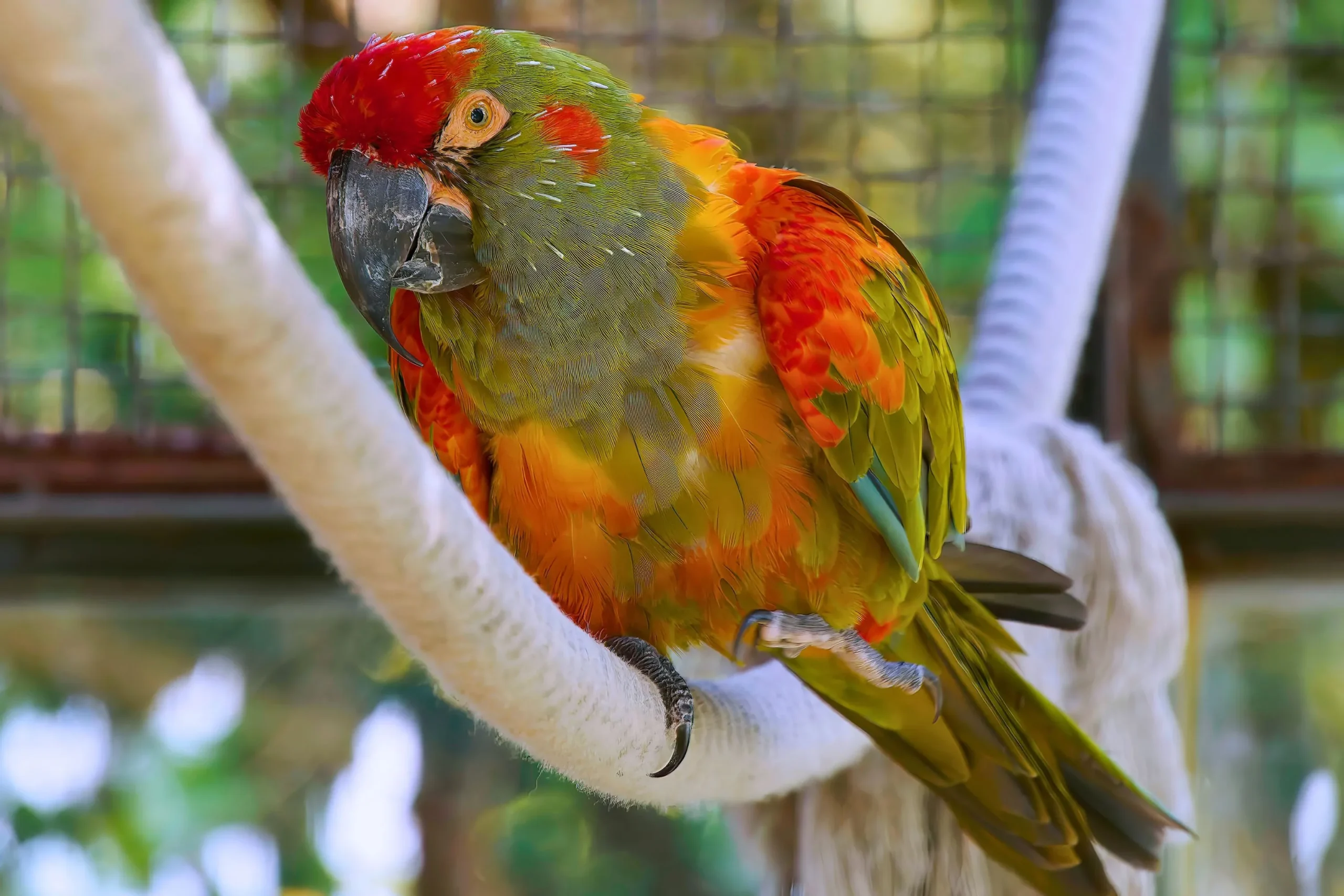In our zoo, visitors can encounter many species that are increasingly rare in their natural habitats. The red-eared macaw in the picture, for example, is critically endangered. In its native Bolivia, located in South America, the wild population is estimated to be less than 300 individuals.

Among the diverse bird species in our zoo, parrots are well-represented. This group includes macaws, some of which are quite large. The hyacinth macaw, for instance, is one of the longest parrots from beak to the tip of its tail feathers (although in terms of weight, another species holds the record among parrots). However, the rarest species in this family is the red-fronted macaw. Native to Bolivia, this species has fewer than 300 individuals remaining in the wild, which makes it critically endangered.
The first red-fronted macaws were brought to us in 1994 as confiscated animals. Authorities seized them from wildlife traffickers attempting to transport them illegally between countries. Unfortunately, illegal capture and trade pose a significant threat to many species, including the red-fronted macaw. This is why international trade of such species is strictly regulated and requires special permits.
Our zoo began caring for this species 30 years ago, and this effort has continued ever since. Currently, we have a single male, who is no longer considered young. However, for many years, we successfully maintained a breeding pair, and several chicks hatched and were raised here. These offspring later moved to other zoos. This work has been conducted under the European Association of Zoos and Aquaria’s (EAZA) species conservation breeding program.
The red-fronted macaw is a good example of the important role that zoos play in conservation and the preservation of endangered species. This includes enforcing international agreements and contributing to coordinated conservation-focused breeding programs in zoos. You can find more details about our conservation activities on our website.